Looking for adventure beyond regular trekking in Nepal? Trekking peaks offer the perfect middle ground between hiking and serious mountaineering. These challenging yet accessible peaks are ideal for experienced trekkers and beginner mountaineers wanting to summit mountains between 5,500-6,500 meters without technical climbing expertise.

In this guide from Luxury Holidays Nepal, we'll walk you through the most stunning trekking peaks across Nepal's major regions, including the iconic Island Peak in Everest and Pisang Peak in Annapurna. You'll discover the best seasons for peak climbing and learn exactly what preparation, permits, and equipment you'll need for a successful summit attempt.
Let's explore these breathtaking Himalayan peaks that combine the joy of trekking with the thrill of reaching spectacular summits!
What Are Trekking Peaks in Nepal?
Definition and classification of trekking peaks
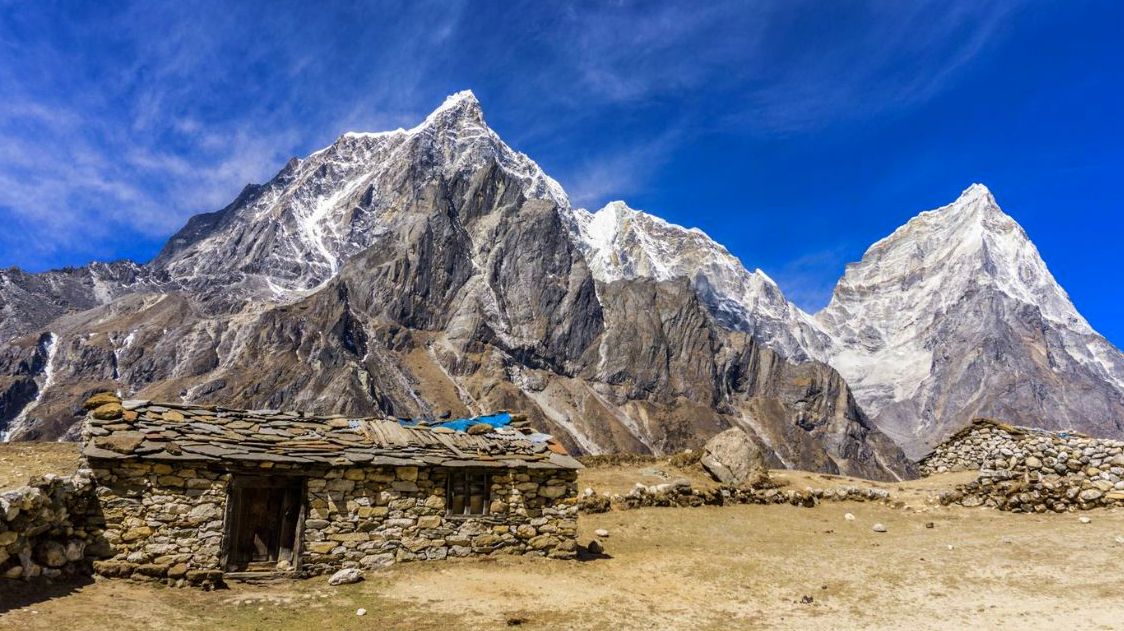
Trekking peaks in Nepal are mountains that sit in that sweet spot between challenging high-altitude treks and full-blown mountaineering expeditions. We classify these peaks as mountains typically ranging from 5,500 to 6,500 meters (18,000 to 21,300 feet) that require basic climbing skills but don't demand extensive technical expertise or specialized equipment.
The Nepal Mountaineering Association (NMA) currently manages 33 official trekking peaks. They've grouped these into various categories based on difficulty levels:
|
Group |
Difficulty |
Examples |
|
Group A |
Beginner-friendly |
Mera Peak, Island Peak |
|
Group B |
Moderate |
Lobuche East, Pisang Peak |
|
Group C |
Challenging |
Chulu West, Singu Chuli |
These classifications help trekkers choose mountains that match their experience level. What makes these peaks special is their accessibility - they offer real climbing experiences without requiring years of mountaineering background.
Difference between trekking peaks and expedition peaks
The main distinction? Scale, complexity, and commitment. When we climb trekking peaks, we're looking at shorter durations (typically 2-3 days of actual climbing) on top of the approach trek. Expedition peaks demand weeks of climbing with multiple high camps.
|
Aspect |
Trekking Peaks |
Expedition Peaks |
|
Height |
Usually below 6,500m |
Often above 6,500m |
|
Duration |
2-3 weeks total |
1-2 months or more |
|
Cost |
$1,500-4,000 |
$10,000-50,000+ |
|
Technical difficulty |
Basic to moderate |
Moderate to extreme |
|
Oxygen requirement |
Rarely needed |
Often required |
Expedition peaks like Everest, Annapurna, or Makalu require extensive planning, significant financial investment, and specialized logistics teams. We find trekking peaks offer that perfect middle ground for adventurous trekkers wanting to step into mountaineering.
Permits and regulations for climbing trekking peaks
Getting permits for trekking peaks is straightforward compared to expedition mountains. We need to secure two main documents:
-
NMA Climbing Permit - This costs between $250-500 depending on the peak and season. Spring (March-May) permits cost more than autumn (September-November) permits.
-
Local Conservation Area Permit - Most trekking peaks sit within protected areas like Sagarmatha National Park or Annapurna Conservation Area. These permits cost $20-30.
All climbers must be accompanied by a government-registered guide, and we recommend climbing in groups of at least two members plus support staff. The regulations also require comprehensive insurance covering high-altitude rescue and medical evacuation.
Unlike expedition peaks that require permits directly from the Ministry of Tourism, the NMA-managed system makes these peaks more accessible and less bureaucratic. Still, we must follow strict environmental guidelines, including proper waste disposal and respecting local cultural practices.
Best Season for Trekking Peak Climbs
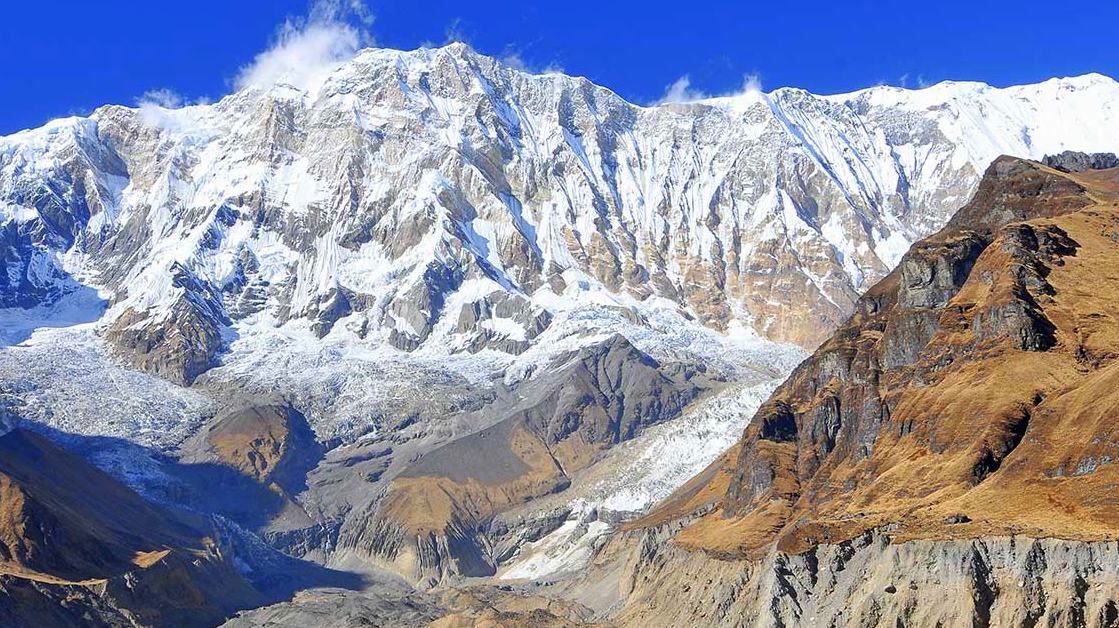
Spring Season Advantages (March-May)
The Himalayas come alive during spring, making it our favorite time for peak climbing in Nepal. Temperatures gradually warm up, with daytime readings between 15-20°C (59-68°F) at lower elevations and around 0-10°C (32-50°F) at higher camps.
We've found the stable weather patterns during these months provide the perfect window for summit attempts. Rhododendron forests burst into vibrant reds and pinks along the trekking routes, creating absolutely stunning backdrops for your adventure photos.
Another huge plus? The clear skies offer unobstructed mountain views almost daily. Visibility is at its peak, allowing us to spot landmarks from miles away and giving climbers those jaw-dropping panoramas they came for.
Autumn Season Benefits (September-November)
Nothing beats autumn for reliability. After the monsoon washes everything clean, we get crisp air and crystal-clear mountain views that simply take your breath away. The skies stay predominantly blue, and the stable high-pressure systems mean minimal chance of sudden weather changes.
Temperatures hover in the comfortable range - warm days and cool (but not freezing) nights. This makes the climbing experience much more pleasant than in other seasons. The trails also tend to be drier, providing better grip and safer passage through technical sections.
Bonus point: autumn coincides with major Nepali festivals like Dashain and Tihar. The local villages along trekking routes buzz with authentic cultural celebrations, giving our climbers a double treat of mountain adventure and cultural immersion.
Winter and Monsoon Considerations
Winter (December-February) brings challenges but also unique rewards. The temperatures drop significantly, with nighttime readings often plunging below -20°C (-4°F) at higher elevations. We always recommend extra layers and specialized cold-weather gear for winter climbers.
The major upside? Far fewer crowds. You'll practically have the mountains to yourself, with no waiting times at technical sections. Plus, the snow-covered landscapes create a magical winter wonderland that summer trekkers never experience.
Monsoon season (June-August) isn't impossible for climbing, but we generally suggest avoiding it. Heavy rainfall creates slippery trails, and leeches become abundant at lower elevations. The constant cloud cover also means you might trek for days without seeing the peaks you came to climb.
Weather Patterns and Climbing Conditions
We've tracked weather patterns across various peaks for years, and the data consistently shows April-May and October-November offering the most summit opportunities. During these months, the jet stream typically shifts away from Nepal, resulting in calmer winds at higher elevations.
Morning weather generally starts clear before clouds build up in the afternoon. This pattern means we always plan summit pushes for early morning, typically starting around 2-3 AM to reach the top before noon.
Acclimatization works better in stable weather conditions too. Our bodies adapt more efficiently when we're not constantly shifting between different pressure systems and temperature extremes.
Popular Trekking Peaks in the Everest Region
Island Peak (Imja Tse) - 6,189m
When we talk about iconic trekking peaks in the Everest region, Island Peak immediately comes to mind. Rising majestically to 6,189m, this mountain got its name because it appears as an island in a sea of ice when viewed from Dingboche. We've guided countless trekkers up this popular peak, which offers the perfect introduction to Himalayan climbing.
The route takes us through the stunning Khumbu Valley, and the climb itself combines trekking with basic mountaineering. Most climbers need 2-3 days to summit after reaching base camp. The panoramic views from the top are simply breathtaking - Lhotse's massive south face looms directly above, while Makalu and Ama Dablam create a stunning backdrop.
Lobuche East - 6,119m
Lobuche East stands proud at 6,119m and presents a more technical challenge than Island Peak. We've found that this peak requires solid ice and rock climbing skills, making it perfect for trekkers looking to push their boundaries.
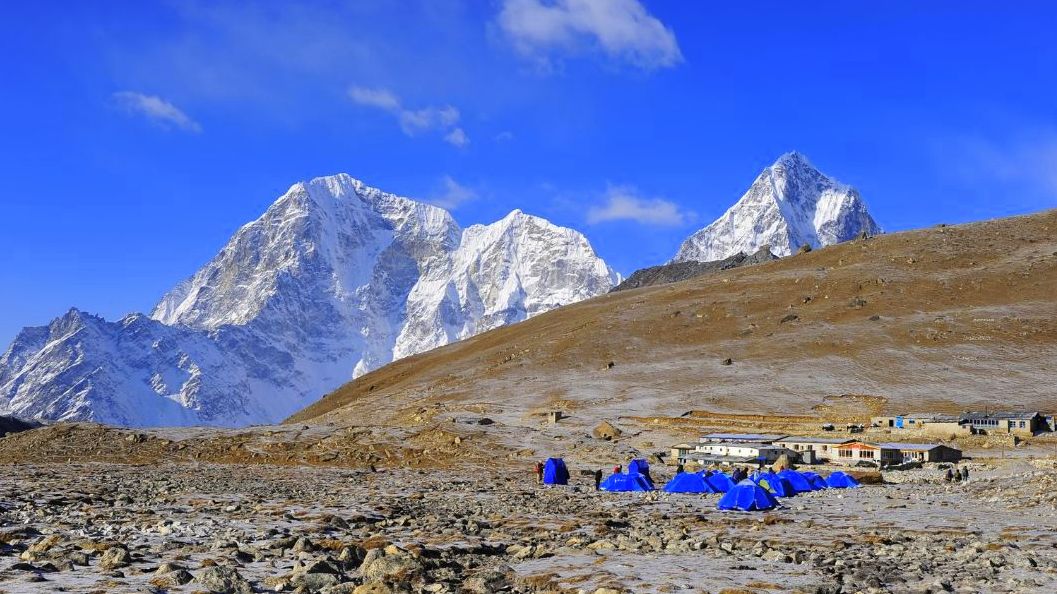
The mountain features two distinct summits - East and West - with the eastern peak being more accessible for trekking. The route takes us through the beautiful Khumbu region, with the final climb involving some exposed sections that get our adrenaline pumping every time.
What we love about Lobuche is the spectacular view of Everest, Lhotse, Nuptse, and the sprawling Khumbu Glacier from its summit. The sense of achievement when standing on top is truly unmatched.
Mera Peak - 6,476m
At 6,476m, Mera Peak holds the title of Nepal's highest trekking peak. Despite its impressive altitude, we consider it technically less demanding than other peaks in the region - perfect for ambitious trekkers with limited mountaineering experience.
The journey to Mera takes us through the less-traveled and incredibly scenic Hinku Valley, offering a more solitary experience compared to the main Everest Base Camp trail. The climb itself typically involves crossing glacier terrain and a final steep snow slope to the summit.
From the top, we're treated to what might be the finest mountain panorama in the world - five 8,000m peaks are visible (Everest, Lhotse, Cho Oyu, Makalu, and Kangchenjunga). The sheer scale of these giants never fails to humble us.
Pokalde Peak - 5,806m
Pokalde Peak may be smaller at 5,806m, but we've found it's the perfect choice for beginners or those with limited time. Located near the Kongma La pass, this peak offers relatively straightforward climbing with minimal technical challenges.
The approach through the Khumbu Valley passes through traditional Sherpa villages and monasteries, adding cultural richness to the physical adventure. Most climbers can summit and return to base camp in a single day, making it an excellent "add-on" to an Everest Base Camp trek.
Despite its accessibility, Pokalde doesn't disappoint with its summit views - the entire Khumbu Valley spreads out below, with Ama Dablam dominating the skyline.
Kongma Tse - 5,849m
Kongma Tse (also known as Mehra Peak) rises to 5,849m and sits adjacent to the Kongma La pass. We've guided many intermediate climbers up this peak, which offers a good balance of challenge and accessibility.
The climb involves crossing the Kongma La pass, navigating some glacial terrain, and a final push up mixed rock and snow. What makes this peak special is its relative solitude - even in peak season, we rarely encounter crowds here.
From the summit, we're rewarded with incredible views of Makalu, Ama Dablam, and the entire Khumbu Valley. For climbers looking to escape the more popular routes while still experiencing the majesty of the Everest region, Kongma Tse is our go-to recommendation.
Annapurna Region Trekking Peaks
Pisang Peak - 6,091m
The sheer beauty of Pisang Peak will knock your socks off! Standing tall at 6,091m in the stunning Annapurna region, this mountain gives both newbie climbers and seasoned mountaineers a run for their money.
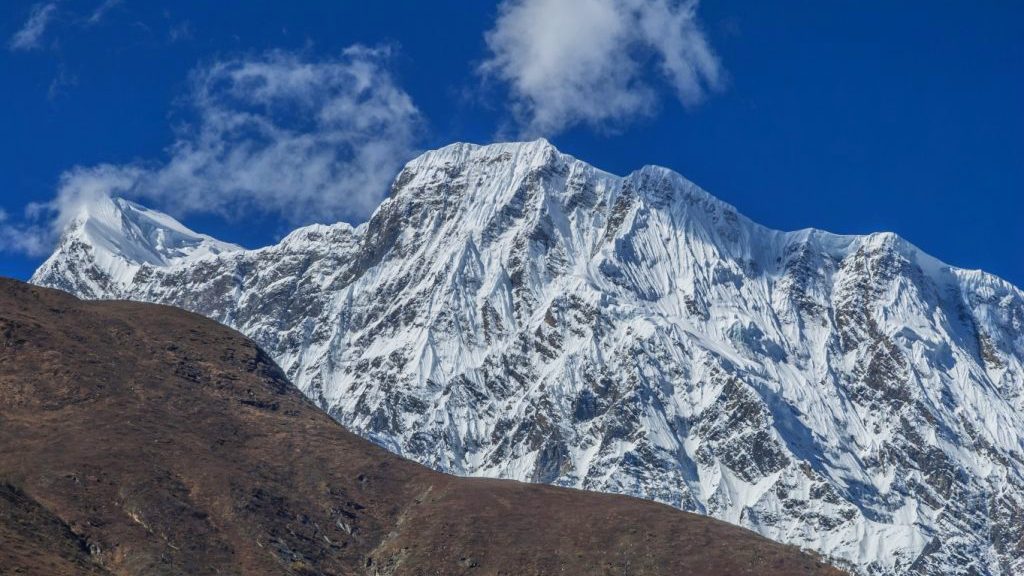
We've guided countless adventure-seekers up this magnificent peak, and trust us, the panoramic views from the summit are absolutely jaw-dropping. On clear days, you can spot Annapurna II, III, IV, Gangapurna, and even the majestic Tilicho Peak.
Most of our climbers tackle Pisang Peak while doing the Annapurna Circuit trek. The best jumping-off point is the charming village of Pisang, where we always take time to acclimatize before the big push.
The climb isn't a walk in the park - you'll need basic mountaineering skills to navigate the final sections. We typically set up two camps: Base Camp at 4,380m and High Camp at 5,400m. The summit day starts crazy early (around 2 AM), but catching sunrise from the top makes every step worth it.
Chulu West - 6,419m
Chulu West packs a serious punch at 6,419m! This beauty sits pretty in the northern Annapurna region and gives climbers technical challenges that make summiting it all the sweeter.
We've found that Chulu West demands respect - it's steeper than many people expect with some sections requiring solid rope work and ice axe skills. The final ridge to the summit will get your heart racing in more ways than one!
Our typical itinerary includes three camps: Base Camp (4,900m), Camp 1 (5,300m), and High Camp (5,700m). The journey up reveals some of Nepal's most breathtaking landscapes - the Annapurna massif, Dhaulagiri, and the vast Manang valley stretching below you.
The climb works perfectly when combined with the Annapurna Circuit, with Manang serving as our acclimatization hub before we branch off toward the mountain.
Singu Chuli - 6,501m
Singu Chuli might be the less famous cousin in the Annapurna family, but at 6,501m, it's certainly not lacking in height or challenge! Also known as Fluted Peak, this mountain demands serious technical climbing skills.
We approach Singu Chuli through the magical Annapurna Sanctuary, with Annapurna Base Camp serving as our staging ground. The journey itself is half the adventure - passing through bamboo forests, rhododendron woods, and finally the lunar-like landscape of the sanctuary.
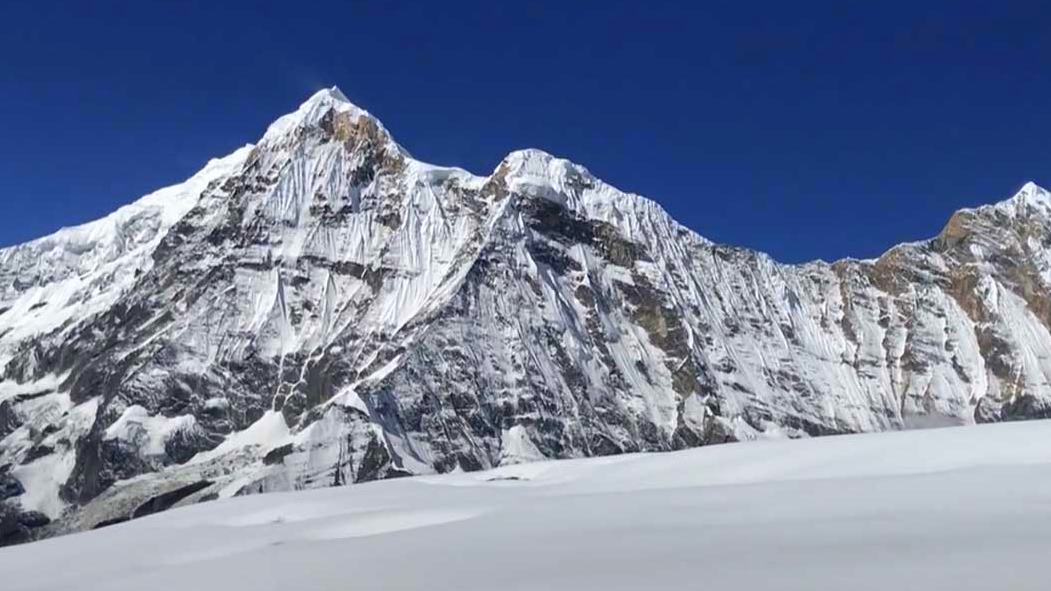
This peak throws everything at you - steep ice sections, crevasses, and technical rock climbing near the summit. We typically establish three camps above base camp, with the final push requiring fixed ropes and serious mountaineering experience.
What makes Singu Chuli special? The unbeatable proximity to 8,000m giants! You're literally surrounded by Annapurna I, Annapurna South, and Machapuchare (Fishtail). It's like climbing in an amphitheater of mountain royalty.
Langtang and Rolwaling Valley Trekking Peaks
Yala Peak - 5,732m
The Langtang Valley truly shines with Yala Peak standing as one of the most accessible trekking peaks in Nepal. We've guided countless adventurers up this beauty, and trust us when we say it's perfect for beginners looking to dip their toes into mountaineering.
At 5,732m, Yala offers spectacular views without demanding technical climbing skills. The journey begins at Syabrubesi, and as we trek through the stunning Langtang Valley, we're treated to incredible mountain vistas and warm Tamang hospitality in villages along the way.
Most climbers need about 7-9 days for the entire trip from Kathmandu. We typically set up base camp at 4,800m and make the summit push from there. The climb itself only takes about 4-5 hours, with the final section requiring basic ice axe and crampon skills that we're happy to teach you.
From the summit, you can't beat the panoramic views of Langtang Lirung, Dorje Lakpa, and even glimpses of Shishapangma in Tibet. We recommend attempting this peak between April-May or October-November when weather conditions are most favorable.
Naya Kanga - 5,846m
Naya Kanga (also called Ganja La Chuli) sits proudly in the Langtang region, offering a slightly more challenging adventure than its neighbor Yala Peak. We consider this an excellent peak for climbers looking to step up their game.
The approach follows the classic Langtang Valley trek, passing through beautiful forests and traditional settlements before reaching Kyangjin Gompa. From there, we establish high camp at around 5,100m on the northeastern flank.
The climb requires traversing a glacier and navigating a steep snow slope with fixed ropes that we set up for safety. The ridge to the summit demands focus but rewards with unmatched views of the Langtang range, Tibet, and on clear days, even the Annapurnas in the distance.
Our climbers typically need 10-12 days for the complete expedition. While more demanding than Yala, we've found Naya Kanga perfect for those with some previous mountaineering experience wanting to push their limits without venturing into extreme territory.
Ramdung Go - 5,925m
Hidden in the less-traveled Rolwaling Valley, Ramdung Go remains one of Nepal's best-kept secrets. We absolutely love guiding trips here because it offers genuine wilderness adventure away from the more crowded trekking routes.
The journey begins with a drive to Dolakha and continues through the beautiful Rolwaling Valley, home to Sherpa communities with traditions distinct from their Khumbu counterparts. The trail passes the stunning Tsho Rolpa glacial lake, one of the largest in Nepal.
Summit day involves navigating glacier terrain and some moderately steep snow slopes. The peak's position offers extraordinary views of Gauri Shankar, Melungtse, and on clear days, even Everest in the distance.
What makes Ramdung Go special is the solitude - we often have the mountain entirely to ourselves. The complete expedition typically takes 14-16 days, making it a perfect choice for adventurers seeking both challenge and cultural immersion away from the tourist crowds.
Essential Preparation for Trekking Peaks
Physical fitness requirements
Getting ready for Nepal's trekking peaks is no walk in the park. We've seen many trekkers underestimate the physical demands these mountains require. For most peaks, we recommend at least 3-4 months of dedicated training. Your body needs to handle 6-8 hours of continuous hiking on steep terrain while carrying a pack.
Our successful clients typically focus on:
-
Cardio endurance (running, cycling, swimming)
-
Leg strength (squats, lunges, step-ups)
-
Core stability (planks, mountain climbers)
-
Upper body strength for those technical sections
We can't stress this enough: if you can't comfortably hike 15-20km with 600-800m elevation gain multiple days in a row, you're not ready for these peaks.
Technical skills needed
Different peaks demand different technical skills. We break it down into categories:
|
Peak Type |
Required Skills |
|
Non-technical (Island Peak) |
Basic crampon use, ice axe skills, rope management |
|
Moderate (Mera Peak) |
Above plus fixed rope techniques, glacier travel |
|
Technical (Ama Dablam) |
Advanced climbing, belaying, rappelling, self-rescue |
Even for "easier" peaks, we expect our climbers to be comfortable with harnesses, carabiners, and basic knot tying. No need to be an expert mountaineer - that's what our guides are for - but basic competency keeps everyone safer.
Acclimatization strategies
Altitude sickness doesn't care how fit you are. We've seen marathon runners struggle while slower trekkers thrive. Our proven acclimatization approach includes:
-
The "climb high, sleep low" method
-
Rest days every 3-4 days of ascent
-
Maximum 400-500m sleeping altitude gain per day
-
Hydration targets of 4-5 liters daily
-
Acclimatization side hikes
Smart acclimatization often means the difference between summit success and dangerous evacuations. We build these strategies into every itinerary we create.
Training recommendations
Our most successful climbers start training at least 16 weeks before their trek. Here's the program we recommend:
-
Build a base (weeks 1-4): 3-4 cardio sessions weekly, increasing duration
-
Add specificity (weeks 5-10): Weighted hikes on terrain similar to Nepal
-
Peak training (weeks 11-14): Long back-to-back hiking days with full pack
-
Taper (weeks 15-16): Reduced volume, maintained intensity
Weekend training should mimic trekking days: 6+ hours of hiking with elevation gain. We also suggest treadmill training at 15% incline for those living in flat areas.
Mental preparation matters too. Trekking peaks test your resilience as much as your body. Practice discomfort - cold showers, early mornings, and pushing through fatigue safely.
Gear and Equipment Essentials
Climbing Equipment Checklist
Trekking peaks in Nepal demand proper gear, and we've learned this the hard way after countless expeditions. Here's what you absolutely need:
-
Technical gear: Ice axe, crampons, harness, carabiners (4-5), prusik cords, figure 8 descender, and ascenders
-
Safety equipment: Helmet, glacier glasses (100% UV protection), headlamp with extra batteries
-
Ropes: 50m dynamic climbing rope (for a team), 2 slings
-
Navigation: Compass, altimeter, map of your route (waterproof)
-
Communication: Radio/satellite phone, whistle
We recommend renting specialized climbing gear in Kathmandu rather than lugging it from home. Reputable outfitters like Shona's Alpine and Everest Hardwear offer quality equipment at reasonable prices.
Clothing Recommendations
The key to comfort on Nepali peaks? Layering. Temperatures can swing wildly from sweaty climbs to freezing summits.
Base layers:
-
2-3 moisture-wicking t-shirts/long sleeves
-
2 thermal tops and bottoms
-
4-5 pairs of hiking socks (merino wool)
Mid layers:
-
Fleece jacket
-
Softshell pants
-
Down vest
Outer layers:
-
Waterproof/windproof jacket with hood
-
Waterproof pants
-
Down jacket (rated for -20°C)
-
Gaiters
Extremities:
-
Warm hat covering ears
-
Balaclava/buff
-
Liner gloves
-
Heavy insulated gloves/mittens
-
Hiking boots (broken in!)
-
Mountaineering boots (double boots for peaks over 6000m)
Personal Items and Medications
We never hit the trail without these essentials:
Personal care:
-
Sunscreen (SPF 50+)
-
Lip balm with SPF
-
Hand sanitizer
-
Wet wipes
-
Quick-dry towel
-
Toilet paper
-
Toothbrush/toothpaste
-
Basic first aid supplies
Medications:
-
Diamox (for altitude sickness)
-
Pain relievers (ibuprofen/acetaminophen)
-
Anti-diarrhea medication
-
Broad-spectrum antibiotics
-
Blister treatment
-
Rehydration salts
-
Personal prescriptions
Documents:
-
Climbing permits
-
Travel insurance (with helicopter evacuation)
-
Cash (Nepali rupees for teahouses)
-
Passport and photocopies
Extras we swear by:
-
Portable battery pack
-
Camera (with extra batteries)
-
Lightweight journal
-
Earplugs (teahouses can be noisy)
-
Trekking poles (save your knees!)
Luxury Services for Trekking Peak Expeditions
Premium accommodation options
We believe luxury shouldn't stop when the hiking begins. Our premium accommodation options transform your trekking experience from merely challenging to absolutely unforgettable. During your journey to Nepal's most breathtaking peaks, we arrange stays at the finest mountain lodges and boutique hotels available in the regions.
In Kathmandu and Pokhara, you'll enjoy 5-star accommodations with all the amenities you'd expect - spacious rooms, incredible mountain views, spa facilities, and exceptional dining options. Once on the trail, we've partnered with the highest standard tea houses and mountain lodges, offering private rooms with attached bathrooms wherever possible - a rare luxury in the Himalayas.
For those seeking an even more exclusive experience, our private luxury camping setups come complete with comfortable beds, heating systems, dining tents, and even hot showers. Nothing beats sipping fine wine under the stars after conquering a challenging day on the mountain.
Experienced guides and support staff
The difference between a good expedition and an extraordinary one? The people who guide you. Our handpicked team consists of Nepal's most experienced IFMGA/UIAGM certified climbing guides, many with multiple summits of 8000m peaks.
We maintain a low client-to-guide ratio (usually 2:1) ensuring personalized attention throughout your journey. Our support staff includes skilled chefs preparing nutritious, restaurant-quality meals even at high altitudes, porters who handle the heavy lifting so you can focus on the climb, and dedicated liaison officers who manage all permit formalities.
Our team members receive extensive medical training, carry satellite phones and first-aid equipment, and speak excellent English. More than employees, they're passionate mountaineers who share your enthusiasm for Nepal's magnificent peaks.
Customized itineraries and private expeditions
Cookie-cutter expeditions? Not our style. We craft each itinerary around your specific preferences, fitness level, and climbing experience. Want an extra acclimatization day? Interested in exploring a nearby monastery? Hoping to combine multiple peaks in one journey? We make it happen.
Our private expeditions offer complete flexibility - you choose your dates, companions, and pace. This personalized approach maximizes summit success rates while ensuring the experience matches your vision.
Before departure, we conduct thorough consultations to understand your goals and preferences, then design a customized training program to prepare you for the specific challenges of your chosen peak.
Helicopter evacuation services
Your safety is our non-negotiable priority. While we take every precaution to ensure a smooth expedition, we're also realists about high-altitude mountaineering risks. That's why we include comprehensive helicopter evacuation services in our premium packages.
We maintain standing arrangements with Nepal's top helicopter operators, ensuring rapid response in emergencies. Our guides carry satellite communication devices that work even in the most remote areas, allowing immediate coordination of evacuations when necessary.
Beyond emergencies, we also offer helicopter services for more comfortable approaches or returns, letting you skip lengthy treks in or out when you prefer to conserve energy for the climb itself. Some clients even choose helicopter sightseeing tours as a spectacular finale to their successful summit.
Cost Considerations
Permit fees and government taxes
The climbing permits for trekking peaks in Nepal aren't cheap, but they're worth every penny. We've helped countless trekkers navigate these costs, which vary significantly depending on the peak. For popular peaks like Island Peak or Mera Peak, expect to pay around $250-$500 per person during the main seasons. The Nepalese government has tiered pricing, with higher fees during peak seasons (spring and autumn) and discounts for winter and summer attempts.
Don't forget about the additional government taxes (about 13% VAT) and the mandatory Trekkers' Information Management System (TIMS) card at around $10. For peaks in restricted areas like Mustang or Upper Dolpo, you'll need to budget extra for special region permits.
Guide and porter expenses
We strongly recommend hiring experienced guides for your trekking peak adventure - it's not just safer but often required by law. A qualified climbing guide typically costs $25-$50 per day, while porters charge $15-$25 daily. For a standard 2-3 week expedition, this adds up quickly!
Remember to factor in tips (10-15% is customary) and your team's equipment, insurance, food, and accommodation. Many trekkers forget these "hidden costs" when budgeting.
Equipment rental options
Why purchase expensive climbing gear you might use only once? We've partnered with reliable equipment rental shops in Kathmandu and Pokhara that offer everything from down jackets and sleeping bags to technical climbing gear like crampons, ice axes, and harnesses.
Renting equipment typically costs $5-$15 per item per day, depending on quality and seasonality. A complete set for a trekking peak expedition might run $150-$300 for a two-week trip - significantly cheaper than buying new.
Insurance requirements
Don't even think about attempting a trekking peak without proper insurance! We require all our clients to have comprehensive travel insurance with specific coverage for:
-
High-altitude trekking (above 5,000m)
-
Emergency helicopter evacuation
-
Medical treatment up to $100,000
-
Trip cancellation protection
Proper insurance typically costs $100-$200 for a two-week expedition. It's the one expense you should never skimp on.
Complete package vs. individual arrangements
We offer both all-inclusive packages and à la carte services, each with distinct advantages:
|
Complete Package |
Individual Arrangements |
|
$1,800-$3,500 for 2-3 weeks |
Potentially 10-30% cheaper |
|
Everything handled for you |
Requires more planning |
|
No surprise expenses |
Unexpected costs may arise |
|
Experienced team guaranteed |
Quality varies by provider |
|
Easier cancellation policies |
Multiple cancellation policies |
Most first-timers prefer our complete packages for peace of mind, while experienced mountaineers often opt for individual arrangements.
Nepal offers an unparalleled array of trekking peaks that cater to both aspiring mountaineers and experienced climbers. From the majestic summits of the Everest Region to the breathtaking vistas of Annapurna and the pristine beauty of Langtang and Rolwaling Valleys, these peaks provide adventure seekers with the perfect blend of challenge and reward. The optimal seasons for these expeditions, comprehensive preparation strategies, and essential gear requirements all play crucial roles in ensuring a successful and safe climbing experience.
For those seeking to elevate their mountain adventure, Luxury Holidays Nepal provides premium services that transform a standard expedition into an extraordinary journey. While cost considerations vary based on location, difficulty, and desired amenities, the investment delivers priceless memories and accomplishments. Whether you're planning your first trekking peak climb or adding another summit to your collection, Nepal's diverse mountain landscape awaits your exploration. Begin planning your next high-altitude adventure today and discover the unmatched thrill of standing atop one of Nepal's magnificent trekking peaks.
If you need any further information, please contact us by email: at [email protected], Phone: at +977- 985 100 5129 (WhatsApp)




